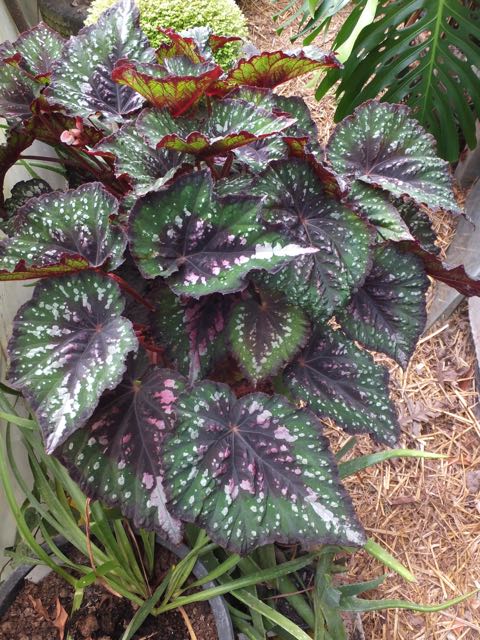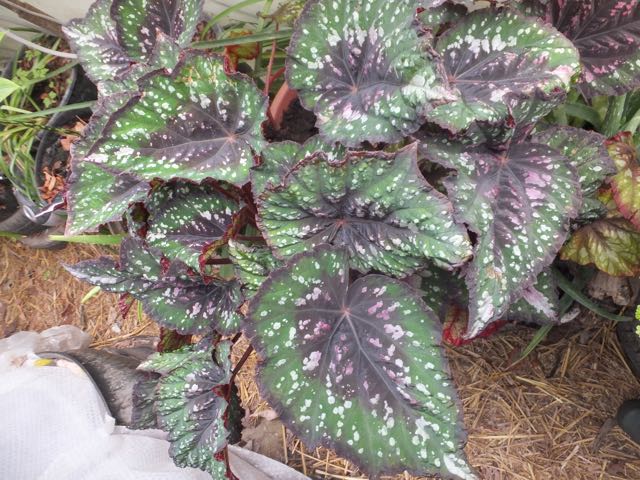
I have written before of the tremendous value in our greenhouses from the Begonia tribe though I was mostly talking about their huge range of floral varieties. Now I am waxing even more enthusiastically about the foliage varieties of Begonia particularly B. Rex-cultorum. Rex is a term not often employed in botanical Latin and as with the eponymous Tyranosaurus it stands for the superlative one or King. For these really are the most regal of foliage plants.
Their leaves can be huge, often with a metallic sheen, in shades of green, red and purple, with spotting and shading in a myriad hues and patterns. Yet “all in the best possible taste”. These stalked leaves are all curiously curved in a spiral manner, indeed some varieties spiral each leaf with another interlocking in the manner of a snails shell. In many varieties the back of the leaves are differently hued, and also often glowing with light passing through the translucent leaves. The flowers are small and not imposing, well dingy, it does not matter one jot as the foliage show is everything.
Okay, perhaps this is not the right plant for you to place in a hot dry room, nor anywhere just frost free, and never anywhere cold and damp in winter. If it was not for their size these would be well suited to a bottle garden or Wardian case in a bay window as they love constant conditions and cool moist air, never cold, never hot and never dry. Rex are also much like Gardenias in liking bright places though never wanting direct or parching sunlight.
However get it just right and a Rex will reward you with the most magnificent and long lived of displays for these can go on years. Actually this is their only drawback as any accidental damage keeps on showing and in dusty places the soft leaves can need careful cleaning every so often.

Their compost must be free draining, rich and full of leaf mould. And a substantial container so the top heavy display is stable. Rex prefer watering direct to the compost with warm water, rain of course, with a dash of liquid feed. Water minimally from late autumn till late winter when growth resumes.
Theoretically you can grow these from seed however the choicest named varieties, and there are many dozens, are easily multiplied from leaf cuttings. Collectors might look for some most famous old varieties such as Lord Palmerston, Rajah, Beauty of Pembroke, and the superb elephant-eared metallic green, silver and purple-red Perle de Paris.


